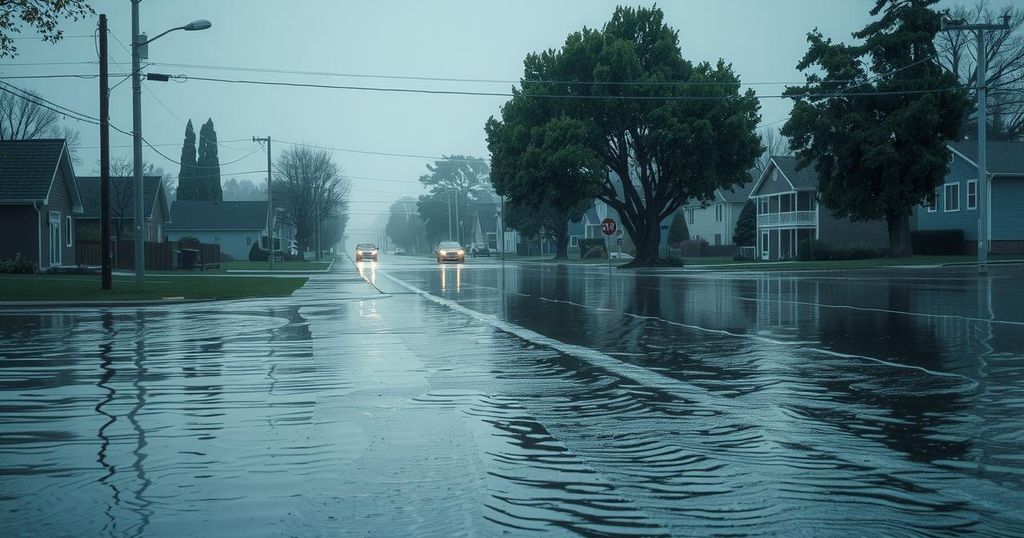The Role of Santa Ana Winds in California’s Wildfire Crisis
Santa Ana winds are a major factor contributing to California’s wildfires, worsened by climate change. These high-speed, dry winds create extremely flammable conditions, complicating firefighting efforts. Historical fires demonstrate the winds’ devastating impact, and climate change further amplifies this risk. Technological solutions and holistic strategies are crucial for effective fire management and community protection.
The Santa Ana winds are a strong meteorological phenomenon in Southern California that contribute significantly to the occurrence of wildfires. This phenomenon, characterized by dry and powerful winds, has been the catalyst for some of California’s most devastating fires, including the notable recent Pacific Palisades fire. As the effects of climate change intensify, these winds further aggravate fire spread and highlight the urgent need for improved strategies in fire management and prevention.
The mechanics behind the Santa Ana winds involve high-pressure systems that push warm air from inland areas toward the coast, resulting in extreme heat and dryness. This phenomenon, known as adiabatic heating, can reduce relative humidity to levels below 10%, which allows vegetation to become highly susceptible to igniting. Winds can peak at speeds of 100 km/h, complicating firefighting efforts and facilitating rapid ember spread. The recent Pacific Palisades event vividly exemplifies the dangerous influence of these winds, further challenging firefighting operations.
Climate change has been exacerbating the conditions that foster wildfires, worsening the impact of the Santa Ana winds. Factors such as rising temperatures, diminished snow cover, and extended droughts increase landscape aridity and facilitate fire ignition. A striking increase in summer burn areas in California by fivefold between 1996 and 2021 highlights this trend. While wind patterns may not have changed, the dryness of vegetation and extreme weather amplify the destructive capabilities of Santa Ana winds.
The historical context of Santa Ana winds reveals their longstanding impact on Southern California’s landscape and wildfire regime. These winds have been documented in Native American traditions and Spanish colonial records throughout history. Significant wildfires, such as the Bel Air Fire of 1961 and the Cedar Fire of 2003, starkly illustrate the role these winds have played in some of the state’s most catastrophic fire events. Consequently, understanding wind behavior is critical for mitigating wildfire risks, particularly amidst increasing urban development and climate unpredictability.
The fierce nature of the Santa Ana winds presents considerable challenges in fire management. Rapid fire spread, unpredictable directional changes, and reduced efficacy of aerial firefighting tactics complicate control efforts. During the Pacific Palisades fire, the resulting destruction included over 1,000 structures and mass evacuations of thousands of residents. Such events underscore the need for enhancements to monitoring systems, robust early warning protocols, and strategic urban planning to safeguard against surging wildfires.
Technological advancements are essential in addressing the threat posed by wildfires due to Santa Ana winds. Implementing drones equipped with thermal imaging aids in real-time fire monitoring and identifies critical areas inaccessible to ground crews. Coupled with predictive artificial intelligence models, these tools optimize resource allocation and enhance response strategies. Moreover, sophisticated early warning systems that utilize meteorological data contribute to swifter community responses to fire hazards, signaling a shift toward more proactive wildfire management practices in California.
Effectively managing the implications of Santa Ana winds necessitates a comprehensive strategy that encompasses climate adaptation, resource management, and community education. Initiatives such as reforestation, preventive vegetation management, and fire-resistant urban planning are vital for minimizing the impacts of these destructive winds. Collaboration across scientific, urban planning, and firefighting sectors will be crucial to improve predictive capabilities regarding wind behavior. As climate extremes become more prevalent, preparing for Santa Ana winds is critical to safeguarding Californian lives and communities.
Santa Ana winds are dry, powerful winds that originate from the inland region of Southern California and are known to exacerbate wildfires. These winds are particularly dangerous because they can rapidly spread flames and create challenging conditions for firefighting teams. Climate change has intensified the effects of these winds, making it increasingly necessary to develop advanced strategies for fire management and prevention in order to protect vulnerable communities and landscapes.
In summary, Santa Ana winds serve as a significant catalyst for the destructive wildfires that plague California, especially amidst the strains of climate change. Understanding their mechanics and impact is vital for enhancing fire management strategies. Additionally, integrating technological advancements and fostering community preparedness are paramount in mitigating the catastrophic consequences of these winds and safeguarding lives and properties in California.
Original Source: www.drivingeco.com




Post Comment